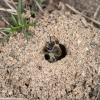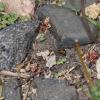While you might be enamored with carpenter bees, spiders, and the American burying beetle – others might see these creatures as “pests” to be avoided, if they think of them at all. Bridging the gap and changing attitudes begins with building awareness, and writing a letter to the editor of your local paper is still one of the best tools for doing so. Here are some tips for writing an effective letter – we hope they inspire you to lend your voice to the conservation conversation!
Getting Started
First of all, it is important to know the general format and requirements of your local paper. According to the National Council of Teachers of English – here are some things to keep in mind:
Adhere to word count requirements. This information can usually be found, online and in print, on the same page as the letters that are published. 250 words are the generally the maximum, so it’s important to keep the message of your letter focused and as specific as possible.
Open with a strong statement, and be sure to place the most important information at the beginning. Often, letters and pieces are edited to fit the space available so it’s important to define the key message of your letter early on.
Consider your headline, while the editor herself will often be responsible for writing the headline for your piece – it is helpful and sometimes required to provide this information. Think of the headline as the subject line of an email – it should be a short (no longer than one sentence) summary of the letter.
Use a personal story or illustration to make your point in plain language. If at all possible, tie your letter to a recent piece of news, editorial, or a prior letter to the editor, and, if you do so, reference the title and date of the article in your letter. If you are referring to a newspaper article, send your letter as soon as possible after an article has been published in the paper.
Submitting your letter. Generally speaking, editors now require letters to be submitted online of via email. Look for information on how to submit a letter in the “opinion” section of the newspaper or the newspaper’s website. In your signature line include your name, daytime and evening telephone numbers, email address, and mailing address so the paper can verify that you wrote the letter. Some editors may write or call to confirm your information. Only your name and city will be published.
Bringing it all together
If you’re not sure where to start, our website has dozens of publications and information to inspire you. The sample letter provided below clocks in at 249 words, and can be used as a basis for a letter of your own!
—
Planting for pollinators has never been easier, or more important
The recent listing of the rusty patched bumble bee as an endangered species is yet another reminder of the serious decline of many pollinator species. You may not realize just how easy it can be for each of us to do our part to reverse this worrying trend.
Landscaping for pollinators has many benefits including beautifying our community and supporting other wildlife. If you have children, showing them a colorful caterpillar or chrysalis dangling from a stem is a great way to inspire curiosity in the natural world and help them overcome and fears they may have about insects.
Supporting pollinators is easy: provide habitat and sources of food, and – most importantly – protect this habitat from pesticides. Start with flowering shrubs and perennials, mix in herbs and annuals to provide access to pollen and nectar throughout the season, and choose native plants and shrubs whenever possible – they are more attractive to pollinators than non-native plants and don’t run the risk of becoming invasive.
Planting for pollinators has never been easier – The Xerces Society (xerces.org) offers regional plant lists and most local nurseries now include pollinator-friendly plantings and have staff knowledgeable in their selection.
You needn’t plant a multi-acre meadow to have an impact, start with the landscaping around your home, a small “butterfly garden” in your backyard, or include pollinator-friendly plants in your community garden plot. If we all do a little, it will add up to overall habitat and create pollinator-friendly corridors throughout our community.



